


Go to chapter: 1 | 2 | 3 | 4 | 5 | 6 | 7 | 8 | 9 | 10 | 11 | 12 | 13 | 14 | 15 | 16 | 17 | 18 | 19 | 20 | 21 | 22 | 23 | 24 | 25 | 26 | 27 | 28 | 29 | 30 | 31 | 32 | 33 | 34 | 35 | 36 | 37 | 38 | 39
Chapter 37 (page 185)




Go to chapter: 1 | 2 | 3 | 4 | 5 | 6 | 7 | 8 | 9 | 10 | 11 | 12 | 13 | 14 | 15 | 16 | 17 | 18 | 19 | 20 | 21 | 22 | 23 | 24 | 25 | 26 | 27 | 28 | 29 | 30 | 31 | 32 | 33 | 34 | 35 | 36 | 37 | 38 | 39
Chapter 37 (page 185)
A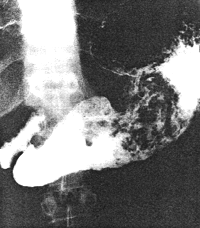 |
B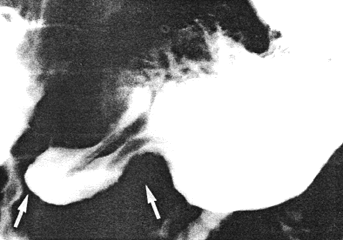 |
| Fig. 37.1. A,B. Case D.R. A Food residues in stomach. Pyloric aperture patent. Gastric peristaltic activity diminished. B Pyloric sphincteric cylinder (arrows) contracted most of the time. |
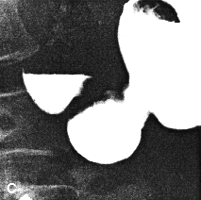 | 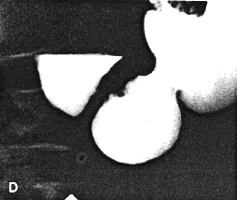 |
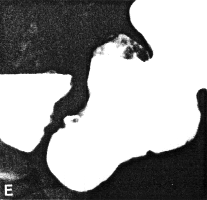 | 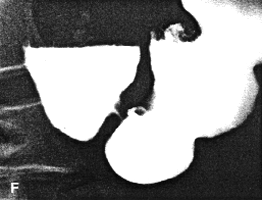 |
| Fig. 37.1. C-F. Case D.R. After treatment and clinical improvement. Lessened contraction of sphincteric cylinder. Some movement evident but normal cyclical activity absent. Note pancreatic calcification | |
Six months later, after proper diabetic control, he had improved clinically. On this
occasion the stomach contained less residual food. Shallow gastric peristaltic waves
were present, while the pyloric sphincteric cylinder remained partially contracted
throughout the examination (Fig. 37.1C). Although this was less marked
than on the previous occasion, normal cyclical activity remained absent and no maximal
or complete contractions were seen. Peristaltic activity in the duodenum appeared to be
decreased. Active peristaltic contractions with a fast passage of barium was noted in the
jejunum. The films also showed scattered areas of calcification in the pancreas and the
case was diagnosed as diabetic gastroparesis and chronic alcoholic pancreatitis.
Previous Page | Table of Contents | Next Page
© Copyright PLiG 1998